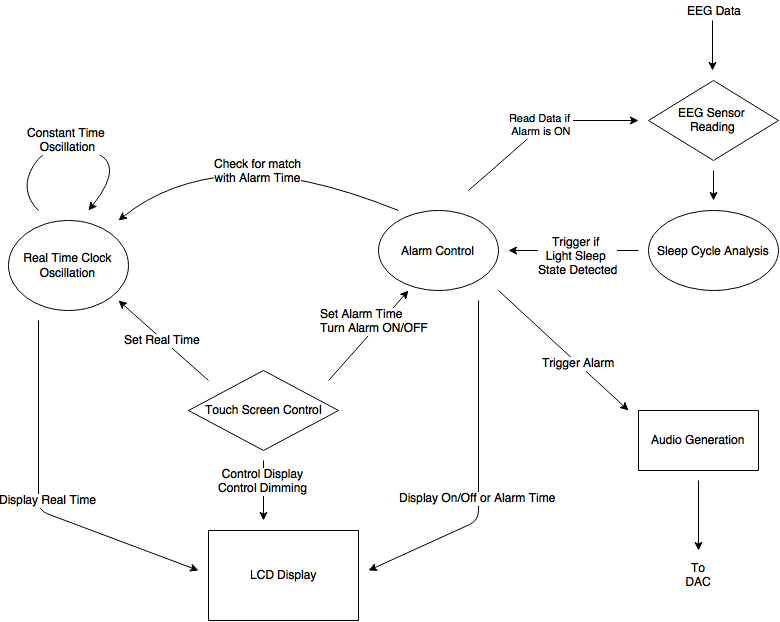Existing Solutions
Our project idea was inspired by some other devices currently on the market. There are many devices similar to ours currently on the market, but most have some major differences. One breed of these devices, is not a device at all but rather a phone app. This phone app, called Sleep Cycle alarm clock, detects sleep states by measuring movement of the user. Another device, called WakeMate, pairs with a smart phone app and is a wristband which uses pulse to determine sleep cycle. The last device, and most similar to ours, was the Kokoon. This device is a set of really comfortable headphone which read EEG data to detect sleep states. It also plays audio to put the user to sleep and ease them out of sleep. Kokoon is a very high quality product and thus very expensive; our project can be though of as a low budget form of the Kokoon.
Links to existing devices:
Our Solution
From the existing solution we were able to determine that this is a well studied and realistic system idea. We chose to approach the sleep cycle analysis using EEG because it seemed to be the most accurate way of detecting a sleep state. There has been a vast amount of research on EEG frequency responses to different sleep states and we were able to determine in our preliminary research that there are distinct brainwave patterns in different sleep states. We also we’re drawn towards this design because we found a low cost EEG sensor which we believed we could easily implement into our system. The sensor is the Mattel MindFlex Headset. We were encouraged to use this by the over-whelming amount of online support for using the headset as an EEG sensor with an Arduino board. We will speak more on the technical details of implementing the headset as a sensor with the PIC 32 on our Hardware and Software Design pages; however, one example of the previously mentioned support can be found using the link below.
High Level Design
We divided our system into sub-systems in order to tackle our project effectively and develop it in a timely manner. We found this was a very beneficial technique in terms of easing the design process and making our system modular. Our sub-systems are as follows.
- Real-Time Clock
- Alarm Control
- Touch Screen Controls
- LCD Display
- EEG Sensor Reading
- Sleep Cycle Analysis
- Audio Generation
The block diagram above shows how the sub-systems interact within the whole system. Creating a design in this manner allowed us to split up each aspect of the system and tackle it in parts. For each sub-system we could figure out which kind of hardware we would need for it, what kind of PIC32 peripherals we needed and how they would be developed in software. During development, we could also figure out how each sub-system should behave on it’s own and then piece them together as they were developed.
We managed to maintain this design throughout our whole development prcoess without having to make any changes. This made the whole process a lot less painful than it would have been other wise. Throughout the rest of this website, we will refer to each sub-system as they are labeled in this high-level design. Detailed information on each sub-system can be found on the Hardware and Software design pages.
Page Directory

